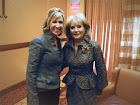 There is an article on newsforparents.org about "mean girls" that is bringing back bad memories.
There is an article on newsforparents.org about "mean girls" that is bringing back bad memories.
Girls who gossip and exclude others from their cliques are often labeled as popular by their classmates, and nearly all high school cliques are divided along racial lines, according to University of Alabama at Birmingham (UAB)The study found physically fighting or being a bully gets you popular at a younger age, but spreading rumors and gossiping is a bigger deal when kids get older (It's called relational aggression). No surprise there. Sixth grade was the worst for me. I remember being in this clique and some of the girls were really mean to other people at school. They were very "exclusive" and it was hard to get them to let others in our group. I can't remember specific circumstances, but I do remember thinking, "Why are you so mean when they said certain things."
sociologist Casey Borch, Ph.D. Borch co-authored a study with Antonius Cillessen, Ph.D., at the Radboud Universiteit Nijmegen and the University of Connecticut, to determine how aggression, popularity and academic achievement influenced membership in cliques. The study will be published as a chapter in the forthcoming book "Modeling Dyadic and Interdependent Data in Developmental Research" later this year.
Here's the interesting part. The girls who do exclude people and gossip are the ones who others THINK are popular, but the truth is no one really likes them. It's all just perception.
"The 'mean girls' effect suggests that girls engage more in this type of behavior more than boys," says Borch, "and as a rule, they do, but the people who gain more from this behavior are minority boys. Minority boys who are relationally aggressive gained a lot more popularity over time than any other group, although, they were less likely to use the behavior.
"One surprising finding was that in the fourth grade about 50 percent of the cliques were of mixed race and ethnicity, but by the 12th grade, nearly 90 percent of cliques were of the one race or ethnicity," says Borch, "so only 10 percent were mixed. This was even more surprising given the increasing ethnicThe researchers say cliches aren't necessarily bad. They can provide a good way to learn social cues. Kids figure out at an early age what kind of people they like to be around and which people are "trouble."
diversity of the school system we studied over time. We did not expect to see
the racial composition of the cliques to go from 50 percent mixed to just 10
percent."
Are your kids in a clique? What ethnicity are the girls/boys in the group?
-NewsAnchorMom Jen




.jpg)













3 comments:
I would very much like to see a longitudinal study that reveals the kinds of adults these young girls grow up to be. I have a feeling that they grow up to be mean women.
I wonder. I should check back with some of the girls I knew and see how they act today. Hmm..
Our 4th grade girls went thru this at our school. They even went so far as cornering a classmate in the bathroom and did not allow her to leave. This was dealt with severly by the administration! As for my daughter I requested for her to have a dentention because she did not tell a grown up or help her friend. Then all of us mothers got together with the girls and had a talk and let the girls know that it would no longer be tolerated. Then we all put them in in same girl scout troop so that they would learn more about each other and work as a team. This has worked out great for our girls in 4th grade. The caddiness seems to have subsided. These girls seem to be so jealous of each other. One of the mother's was just sobbing at our meeting and I don't think I will ever forget her comment to my daughter. She said "jealousy is poison". My motto that I've always lived by and tried to instill in my girls is that we treat people the way that we want to be treated. But, I must say- I have added the jealousy is poison to my motto. I can't help but wonder if the parents talked more to each other and had some type of friendship and became "one team" and confronted this type of behavior, if they could stop some of this unacceptable behavior.
Post a Comment